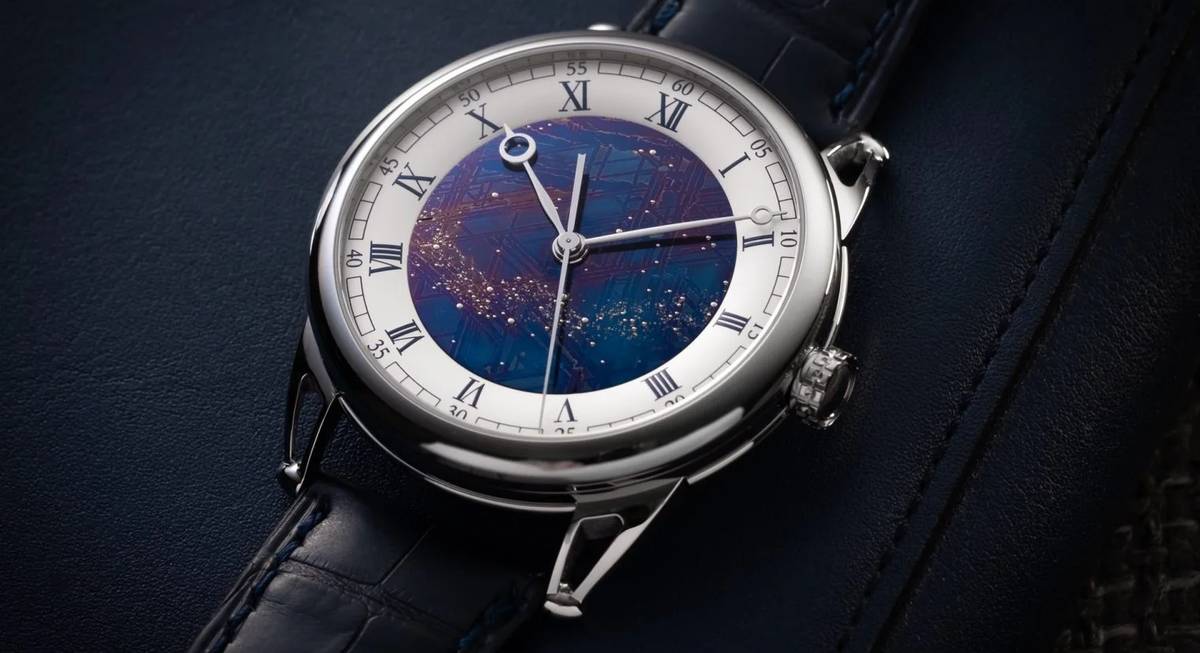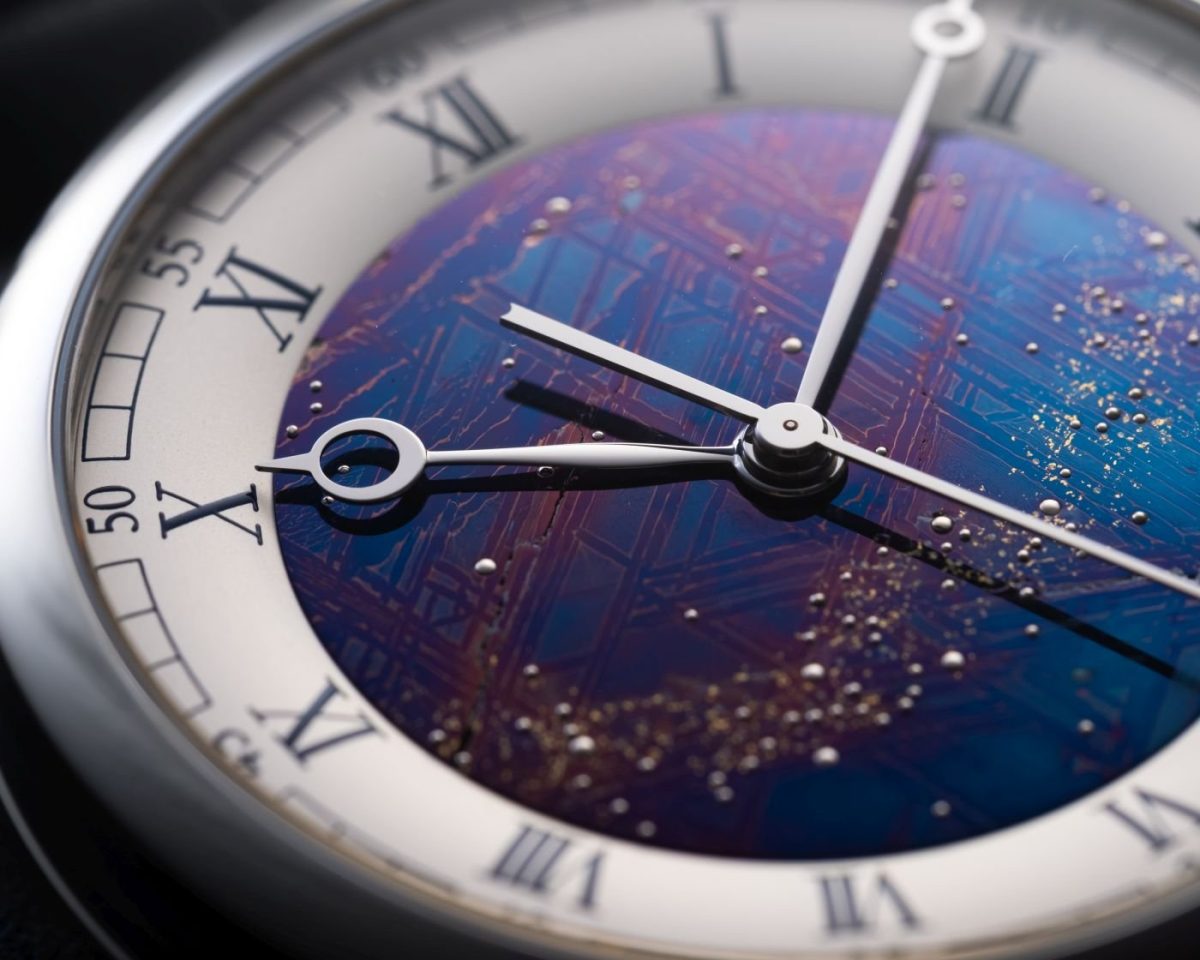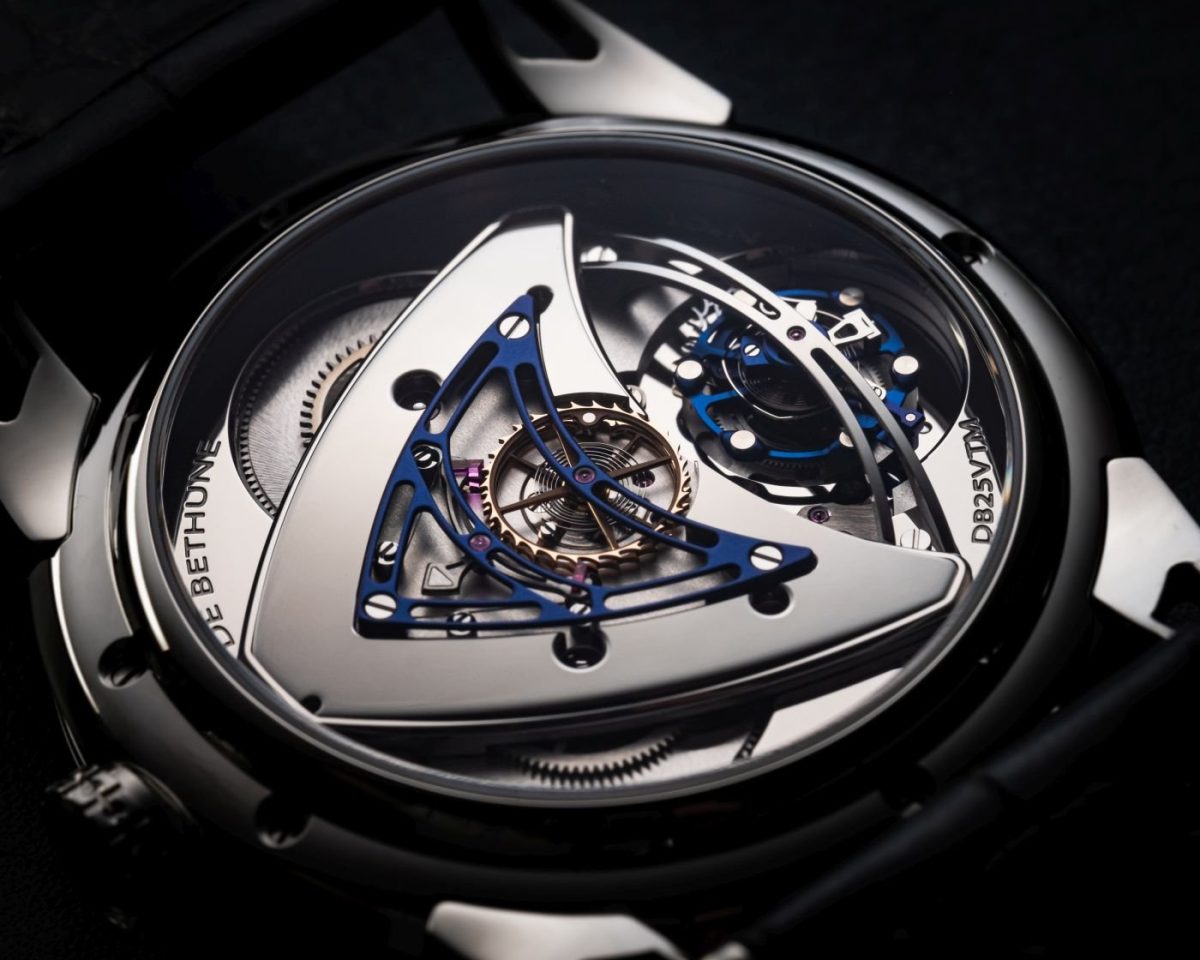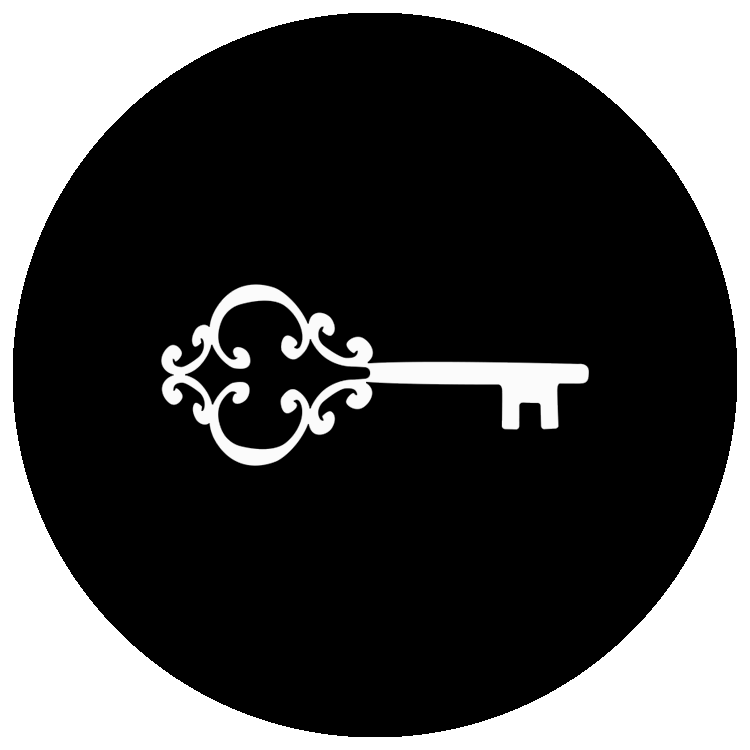De Bethune DB25 Starry Varius Aérolite
Created from a meteorite, the DB25 Starry Varius Aérolite becomes the witness to a chaotically orchestrated force. De Bethune has enriched its dial with a starry sky emblematic of this timeless material. Share
It is in the very heart of stars, where our thermometer would show a few million degrees, that iron meteorites are born. This powerful and poetic energy then gives birth to a new star, or even a galaxy. Created from a meteorite, the DB25 Starry Varius Aérolite becomes the witness to this chaotically orchestrated force. De Bethune has enriched its dial with a starry sky emblematic of this timeless material. Thus, a moment is engraved where time has ceased to exist.
“The cosmos, time, the sky… when you want to see time evolve and you have no instruments, you observe the sky. This is one of the recurring themes in watchmaking,” explains Denis Flageollet, Master Watchmaker and creator of De Bethune. Constantly in search of innovation, it is in the diversity and simplicity of nature that De Bethune carves its most beautiful creations. The DB25 Starry Varius Aérolite will be limited to a production of five pieces per year.

Ferrous meteorites have already been used at De Bethune, notably to create one of the cases of the famous Dream Watch 5, the dial of the DB28 Kind of Blue Meteorite and lately with the dial of the DB28XP Météorite.
Denis Flageollet is passionate about meteorites. A passion that he nurtures by regularly trialling iron ore reduction processes with a view to one day making his own metal. His deep-felt interest in the material and his numerous attempts with Russian and Egyptian meteorites have led the Maison to work with a new kind of meteorite: Muonionalusta Meteorite.

Believed to have struck planet Earth more than one million years BCE, somewhere between Finland and Sweden on the banks of the Muniono river, this is probably the world’s oldest known meteorite to date. The first fragment was discovered in Sweden, in 1906. Composed mainly of iron and nickel, it is distinguished by the perfectly geometrical lines of its 60° angle cross-hatched “Widmanstätten” pattern.
The dial of the DB25 Starry Varius Aérolite is adorned with an ancestral stone forged in space. A metal alloy that endows the dial with a distinctive texture, along with geometrical patterns aligned in a precise way that makes each timepiece special and unique.

De Bethune’s mastery of the thermal oxidation of metals has once again enabled it to raise the level of complexity by creating a starry sky accompanied by its Milky Way on a previously blued meteorite dial. This azure shade results from the heat released by the chemical reactions of the heated meteorite. Dotted across this blue dial surface is a multitude of small white gold pins, delicately driven in between the different shapes and thicknesses of the octahedral geometrical structures.
Like tiny, suspended marbles, these glittering flashes of light endow the celestial vault with its aura of timeless depth. In addition to bringing a unique fragment of space to the wrist, each sky is different: the customer can choose a given constellation, according to a precise sky map, at a specific date, time and place.
Inspired by the classic round shape, the ultra-light polished titanium case of the DB25 Starry Varius Aérolite with its perfectly integrated openworked lugs nevertheless asserts De Bethune’s contemporary expression of the art of watchmaking.



